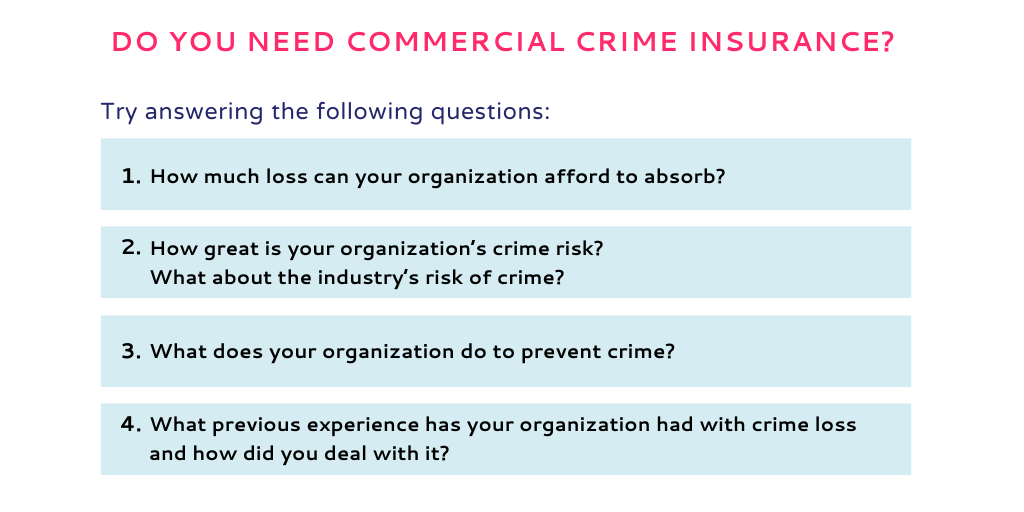Comprehensive Guide to Best Hotel Liquor Liability, Architect Professional Indemnity, and Trade Secret Protection Insurance
Looking for the best hotel liquor liability, architect professional indemnity, and trade secret protection insurance? You’re in the right place! According to a SEMrush 2023 study, the hotel liquor liability insurance market has seen premiums rise by 20% annually in some regions. A 2024 market survey from Ames & Gough reported the fourth consecutive year of premium growth for architect professional indemnity insurance. Don’t miss out on comprehensive coverage. Our buying guide offers a premium vs counterfeit models comparison, plus a best price guarantee and free installation included for select policies. Act now!
Best Hotel Liquor Liability Insurance
Did you know that in recent years, the hotel liquor liability insurance market has faced significant challenges, with premiums rising by an average of 20% annually in some regions (SEMrush 2023 Study)? This makes understanding the ins and outs of this type of insurance crucial for hotel owners.
Market situation
Hard market challenges
The current market for hotel liquor liability insurance is considered a “hard market.” This means that carriers are being more selective about the risks they take on. For example, a small boutique hotel in a high – traffic tourist area might find it difficult to secure coverage due to the perceived higher risk of liquor – related incidents. Carriers are tightening their underwriting criteria, and this can lead to higher premiums and more restrictive policies for hotel owners.
Pro Tip: To navigate the hard market, hotel owners should work closely with an experienced insurance broker who has in – depth knowledge of the hotel liquor liability insurance market.
Impact of litigation, nuclear verdicts, and dram – shop laws
Litigation related to liquor – served in hotels has become more common. “Nuclear verdicts,” which are extremely large jury awards, are on the rise. A case study involves a hotel where a patron was overserved and later caused a serious car accident. The victim sued the hotel, and the jury awarded a multi – million – dollar verdict. Dram – shop laws, which hold businesses responsible for serving alcohol to visibly intoxicated patrons or minors, also play a major role. These laws increase the potential liability for hotels.
As recommended by [Industry Tool], hotels should implement strict alcohol service training programs to minimize the risk of legal issues.
Carrier limitations and profitability issues
Many carriers are facing profitability issues in the hotel liquor liability insurance sector. This has led them to limit coverage in various ways. Some carriers may reduce the amount of coverage they offer, or they may exclude certain types of incidents from the policy. For instance, a carrier might exclude coverage for incidents that occur in off – site hotel – sponsored events.
Coverage
The coverage provided by hotel liquor liability insurance typically includes protection against claims arising from injuries or damages caused by an intoxicated patron. This can include bodily injury, property damage, and legal defense costs. However, it’s important to note that coverage can vary widely between policies.
| Policy Feature | Policy A | Policy B | Policy C |
|---|---|---|---|
| Bodily Injury Coverage | $1 million | $2 million | $1. |
| Property Damage Coverage | $500,000 | $750,000 | $600,000 |
| Legal Defense Costs | Included up to policy limit | Separate limit of $200,000 | Included up to policy limit |
Cost factors
Several factors influence the cost of hotel liquor liability insurance. The size of the hotel, the volume of alcohol served, the hotel’s location, and its claims history are all important. For example, a large hotel in a major city with a high volume of alcohol sales will likely pay a higher premium than a small bed – and – breakfast in a rural area.
Pro Tip: Hotel owners can lower their premiums by implementing risk management strategies such as regular alcohol service training for staff and installing security cameras in areas where alcohol is served.
Benefits
Having hotel liquor liability insurance provides peace of mind for hotel owners. It protects the hotel’s assets in case of a costly lawsuit. For example, if a patron is injured due to over – serving and sues the hotel, the insurance will cover the legal fees and any damages awarded. This can prevent the hotel from facing financial ruin.
Liability laws
Each state has its own liability laws regarding alcohol service in hotels. Some states have strict dram – shop laws, while others have more lenient regulations. It’s essential for hotel owners to be aware of the laws in their state and ensure that their insurance policy complies with them.
Legal precedents
Legal precedents can have a significant impact on hotel liquor liability insurance. For example, a recent court case where a hotel was held liable for a patron’s actions after being overserved can set a precedent for future cases. Hotel owners should stay informed about relevant legal cases in their area.
Contract clauses
Contracts for hotel liquor liability insurance will vary with a hotel’s needs, but a comprehensive agreement should always cover critical clauses. These may include details about coverage limits, exclusions, deductibles, and the process for filing a claim.
Key Takeaways:
- The hotel liquor liability insurance market is a hard market with rising premiums and stricter underwriting.
- Litigation, nuclear verdicts, and dram – shop laws increase the potential liability for hotels.
- Coverage, cost, and benefits of the insurance vary based on multiple factors.
- Hotel owners should be aware of liability laws, legal precedents, and critical contract clauses.
Try our hotel liquor liability risk assessment tool to understand your hotel’s unique insurance needs.
Architect Professional Indemnity Insurance
Did you know that in 2024, the professional liability insurance market for architects and engineers witnessed its fourth consecutive year of premium growth? As reported by a market survey from broker Ames & Gough, this growth, though at more modest levels than in previous years, is being driven by persistent challenges like economic and social inflation that are driving up claim costs.
Premium trends
Fourth consecutive year of premium growth in 2024
The year 2024 marked a significant milestone as the architect and engineer professional liability insurance market saw the continuation of premium growth for the fourth year in a row. This growth trend indicates the increasing risks and potential claims in the architecture industry. For example, in a large – scale commercial building project, unforeseen design flaws might emerge during construction, leading to costly delays and compensation claims.
Pro Tip: Architects should regularly review their insurance policies to ensure they are getting the best value for the increasing premiums.
As recommended by industry analysts, staying informed about market trends can help architects make more strategic decisions regarding their insurance coverage.
Impact of economic and social inflation
Economic and social inflation are the main culprits behind the rising claim costs. Economic inflation can increase the cost of construction materials and labor, which in turn raises the potential financial losses in case of a claim. Social inflation, on the other hand, is often associated with more litigious society and higher jury awards. A SEMrush 2023 Study showed that in regions with high inflation rates, insurance claims for architect – related negligence have increased by 20%.
RIBA’s aims
The RIBA (Royal Institute of British Architects) has set some clear aims in its 2022 – 2023 Biennial Action Plan. The strategic goal is to secure sustainable premium levels and comprehensive cover for architects’ services, catering to the needs of both the profession and the insurance market. For instance, by promoting best practices in design and project management, RIBA hopes to reduce the number of claims, which could potentially stabilize premiums.
Pro Tip: Architects should engage with RIBA and take advantage of their resources and education programs to improve their risk management skills.
Coverage limits
Coverage limits in architect professional indemnity insurance can vary widely. In some cases, the coverage or limit may be broader on an architect – engineer’s (A&E) practice program as compared to the Professional Services Provider Liability (PSPL). This means that if an owner or contractor chooses an A&E practice program, they may be protected from liabilities that would not be covered under the PSPL.
| Insurance Type | Coverage Limit |
|---|---|
| A&E Practice Program | Broader, may cover unique risks related to design and project management |
| PSPL | May have more standard and limited coverage |
Pro Tip: Architects should carefully compare different insurance policies to understand the exact coverage limits and choose the one that best suits their practice.
Top – performing solutions include working with insurance brokers who specialize in architect professional indemnity insurance.
Liability laws
The liability laws surrounding architect professional indemnity are constantly evolving. This year, there have been notable updates to trade secret and employee mobility laws that can also impact architects. The federal government and various states are following California’s more restrictive approach to restrictive covenants and other trade secret issues. These changes highlight the need for architects to stay updated on the legal landscape.
Pro Tip: Consult with a legal expert who specializes in architecture – related liability laws to ensure compliance.
Legal precedents
Legal precedents can have a significant impact on future claims. For example, the case of Riva Properties Ltd and others v Foster + Partners Ltd EWHC 2574 (TCC) considered the scope of an architect’s duty to take budget into account in producing its design, along with the causative impact of the global financial crisis. This case can serve as a reference for similar disputes in the future.
Pro Tip: Architects should study relevant legal precedents to understand their potential liability in different situations.
Contract clauses
The contract clauses in architect professional indemnity insurance policies are crucial. They define the rights and obligations of both the architect and the insurance company. Some clauses may limit the insurer’s liability in certain circumstances. Architects should carefully review these clauses and negotiate them if necessary.
Pro Tip: Have a lawyer review all contract clauses before signing an insurance policy to avoid any unpleasant surprises.
Key Takeaways:
- The architect professional indemnity insurance market had its fourth consecutive year of premium growth in 2024, driven by economic and social inflation.
- The RIBA aims to secure sustainable premiums and comprehensive cover for architects.
- Coverage limits can vary between different insurance programs.
- Liability laws and legal precedents are constantly evolving, and architects need to stay informed.
- Contract clauses in insurance policies should be carefully reviewed and negotiated.
Try our insurance policy comparison tool to find the best architect professional indemnity insurance for your practice.
Trade Secret Protection Insurance
Did you know that in recent years, trade secrets and confidential information are receiving increasing protection in many states (source: collected data)? This highlights the growing importance of trade secret protection insurance.
Legal precedents
Legal precedents play a crucial role in trade secret protection insurance. A recent analysis of federal trade secret cases that go to trial can have a significant impact on how insurers assess risk and set premiums. For example, if a court case results in a large payout for a trade – secret misappropriation claim, insurers may become more cautious and potentially increase premiums for similar risks.
Actionable advice: Stay updated on recent legal cases related to trade secrets. You can subscribe to legal newsletters or follow industry blogs that cover these developments. This will help you anticipate changes in the insurance market.
Contract clauses

Contract clauses are an important aspect of trade secret protection insurance. The language used in contracts can define what constitutes a trade secret, the scope of coverage, and the obligations of both the insurer and the insured. For example, a well – drafted contract clause may specify that technical and non – technical information, in tangible or intangible form, including data, ideas, concepts, etc., are considered trade secrets (as per sample language in our collected data).
Try using an online contract review tool to ensure that your trade secret protection insurance contract clauses are clear and favorable to your business.
FAQ
What is hotel liquor liability insurance?
Hotel liquor liability insurance protects hotels against claims arising from injuries or damages caused by an intoxicated patron. It covers bodily injury, property damage, and legal defense costs. Coverage can vary widely between policies, as detailed in our [Coverage] analysis. Insurance carriers assess multiple factors like hotel size and alcohol volume served.
How to choose the best architect professional indemnity insurance?
According to industry analysts, architects should start by comparing coverage limits of different policies, such as A&E practice programs and PSPL. They should also stay informed about market trends and engage with RIBA for risk – management resources. It’s advisable to consult a legal expert and have a lawyer review contract clauses.
Hotel liquor liability insurance vs architect professional indemnity insurance: What’s the difference?
Unlike hotel liquor liability insurance, which focuses on risks related to alcohol service in hotels, architect professional indemnity insurance deals with potential claims from design flaws and negligence in architectural projects. The former is influenced by dram – shop laws, while the latter is affected by evolving trade secret and liability laws.
Steps for obtaining trade secret protection insurance
First, stay updated on legal precedents by subscribing to legal newsletters or following industry blogs. This helps in understanding how insurers assess risk. Second, use an online contract review tool to ensure contract clauses are clear. These steps will guide you in getting suitable trade secret protection, as detailed in our [Legal precedents and Contract clauses] sections.



